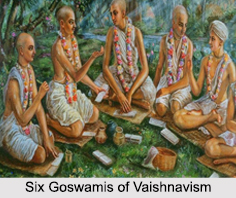 Vrindavan is a historical city of Mathura District in Uttar Pradesh. It is one of the main locations of the Braj Bhoomi region. It is also considered to be the place, where Lord Krishna spent his childhood days. This town houses several temples, which are dedicated to Radha and Krishna and is considered to be a sacred place of Vaishnavism.
Vrindavan is a historical city of Mathura District in Uttar Pradesh. It is one of the main locations of the Braj Bhoomi region. It is also considered to be the place, where Lord Krishna spent his childhood days. This town houses several temples, which are dedicated to Radha and Krishna and is considered to be a sacred place of Vaishnavism.
History of Vrindavan
The essence of Vrindavan was almost lost until the 16th century, when Mahaprabhu Chaitanya rediscovered it. In the year 1515, Chaitanya visited Vrindavan to restore the essence of Vrindavan, which is mainly associated with Lord Krishna"s pastimes. Chaitanya wandered through the different sacred forests of Vrindavan in a spiritual trance of divine love. It was believed that by his divine spiritual power, he was able to locate all the sacred places of Krishna`s pastimes in and around Vrindavan.
Meera Bai, the most famous female Hindu spiritual poet, once left the Mewar kingdom and went on pilgrimages. In the last 14 years of her life Meera lived in a temple named Pracheen Meerabai in Vrindavan. Her compositions are still popular around North India.
Some of the popular Bengali masters who contributed towards the revival of Vrindavan are the six goswamis- Rupa Goswami, Sanatana Goswami, Jiva Goswami (nephew of Rupa and Sanatana), Raghunatha Bhatta Goswami, Gopala Bhatta Goswami (1503-1578), Raghunatha Dasa Goswami; and the second expansion with Srinivasa Acharya, Narottama Das Thakur and Shyamananda Prabhu. All of them devoted their life to reveal the sacred places, which are associated with Radha, Krishna and Gopis. In these places, Radha and Krishna performed their specific "Leelas".
This article is a stub. You can enrich by adding more information to it. Send your Write Up to content@indianetzone.com.



















